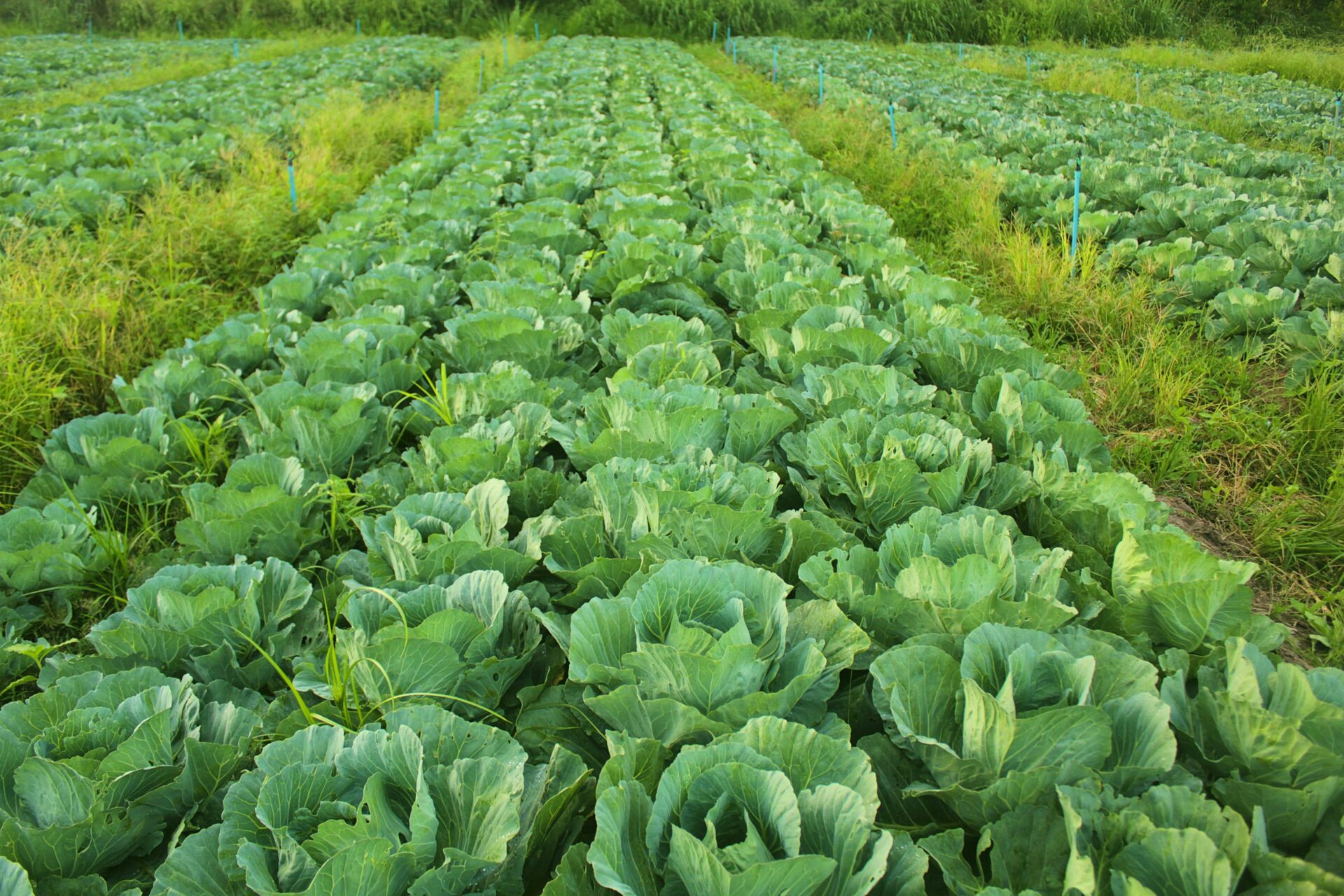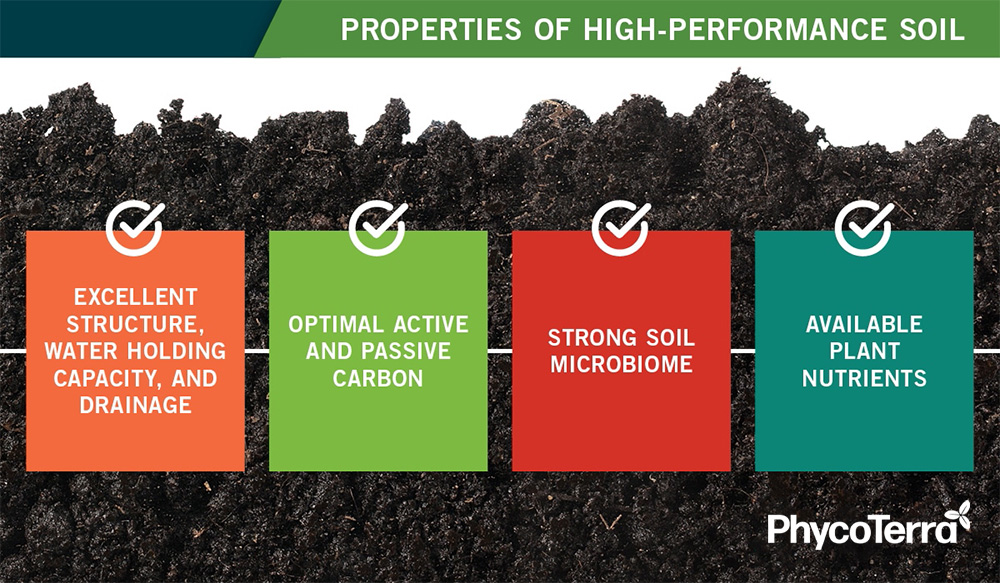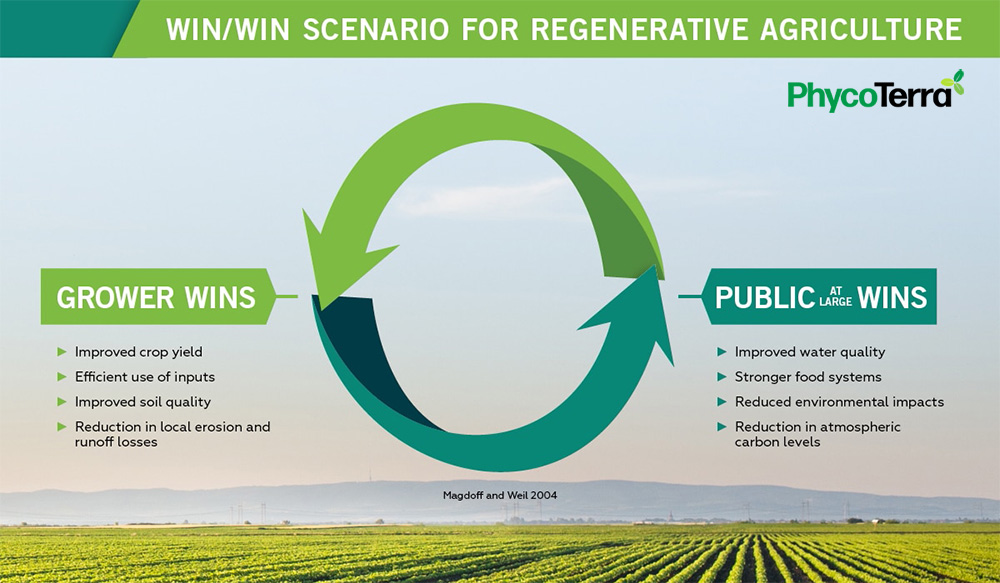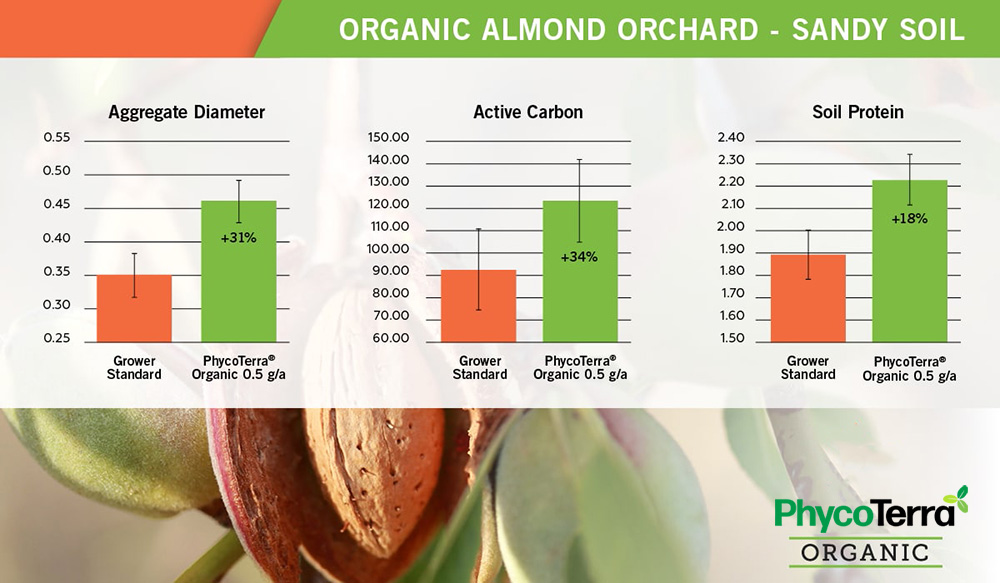Sep 11, 2025

Is your soil built for high performance? That is, does your soil have the optimized capacity to store nutrients and water, allow for plant roots to grow unimpeded by compaction and areas with low oxygen, and support a healthy microbial community (Figure 1)? This seems like a lot to ask from your soil system, but a high-performance soil can do all of these things and more. What is one secret to high performance soils? The answer: carbon.
Soil carbon is a key to unlocking the performance of your soil. A measurement commonly shown on a soil test report is soil organic matter % (SOM% or OM%) and this metric tells you a lot about the carbon status of your ground. Sometimes the terms soil organic matter and soil organic carbon are used interchangeably as carbon makes up most of the soil organic matter, (Gasch and DeJong-Hughes 2019).
Soil organic matter includes a complex mixture of carbon-based substances derived from living and decomposing plant and animal sources. However, all of this soil carbon is not the same. Here we turn our attention to the terms stable organic matter and active organic matter. The stable organic matter has been in the soil system for many years, sometimes centuries or millennia, and has been repeatedly processed by microbes and has thus undergone significant chemical modification (Weil and Brady 2017). The stable organic matter is what provides soil with its rich dark coloring and makes up 60-90% of your soil test SOM%. It is worth noting that stable organic matter takes many years to build up in the soil and originally enters the system as active organic matter.
Active organic matter is the portion of soil carbon that is currently decomposing. These materials are quite young – usually less than five years in the soil (Gasch and DeJong-Hughes 2019). This type of organic matter includes exudates from plant roots and recently living plants (both surface residues and roots), waste products, and other dead organisms. At a chemical level, active organic matter contains sugars, oils, cellulose, and proteins (Gasch and DeJong-Hughes 2019). Active organic matter is a small portion of the total organic matter in the soil (10% to 20% – Weil and Brady 2017) but exerts a large influence on desired soil properties, which I explain below.
Active organic matter fuels microbial growth which, in turn, influences soil health and quality parameters such as water holding capacity, cation exchange capacity, soil structure and aggregation – which are all hallmarks of a high-performance soil. Furthermore, active organic matter is very sensitive to changes in carbon inputs and farm management practices and one can quickly deplete soil organic matter if active inputs are not maintained. Management practices that add active organic material to the soil can incorporate deliberate additions of labile microbial food sources, including PhycoTerra, as a part of a larger soil organic matter building program.
The PhycoTerra product line of conventional and organic microalgae technology is a proven way to add active organic matter to the soil – expressed in Figure 2 (center) as “active carbon”. The inclusion of active carbon fuels increased microbial activity that drives improved aggregation (Figure 2 – left) and increased organic nitrogen availability (Figure 2 – right). Our research at Heliae™ Agriculture has led to the creation of a quality microalgae product for a variety of sustainable soil solutions that can have an impact of your soil organic matter building program.
Learn more about our Soil Microbe Food, PhycoTerra and how it can get you started down the road of building high performance soils on your farm.


Figure 1 – High performance soils have these characteristics in spades (Weil and Brady 2017). PhycoTerra has a strong influence on structure/drainage, soil microbiome, and active carbon in the soil and is a perfect complement to the usual focus on plant nutrients and soil fertility.

Soil Organic Matter Does Matter (SF1942, Nov. 2019) – https://www.ag.ndsu.edu/publications/crops/soil-organic-matter-does-matter
Weil and Brady 2017 – https://www.pearson.com/us/higher-education/program/Weil-Nature-and-Properties-of-Soils-The-15th-Edition/PGM219427.html
Note: All trial data is current as of blog posting. For the most up to date trail data, please visit our trials page.